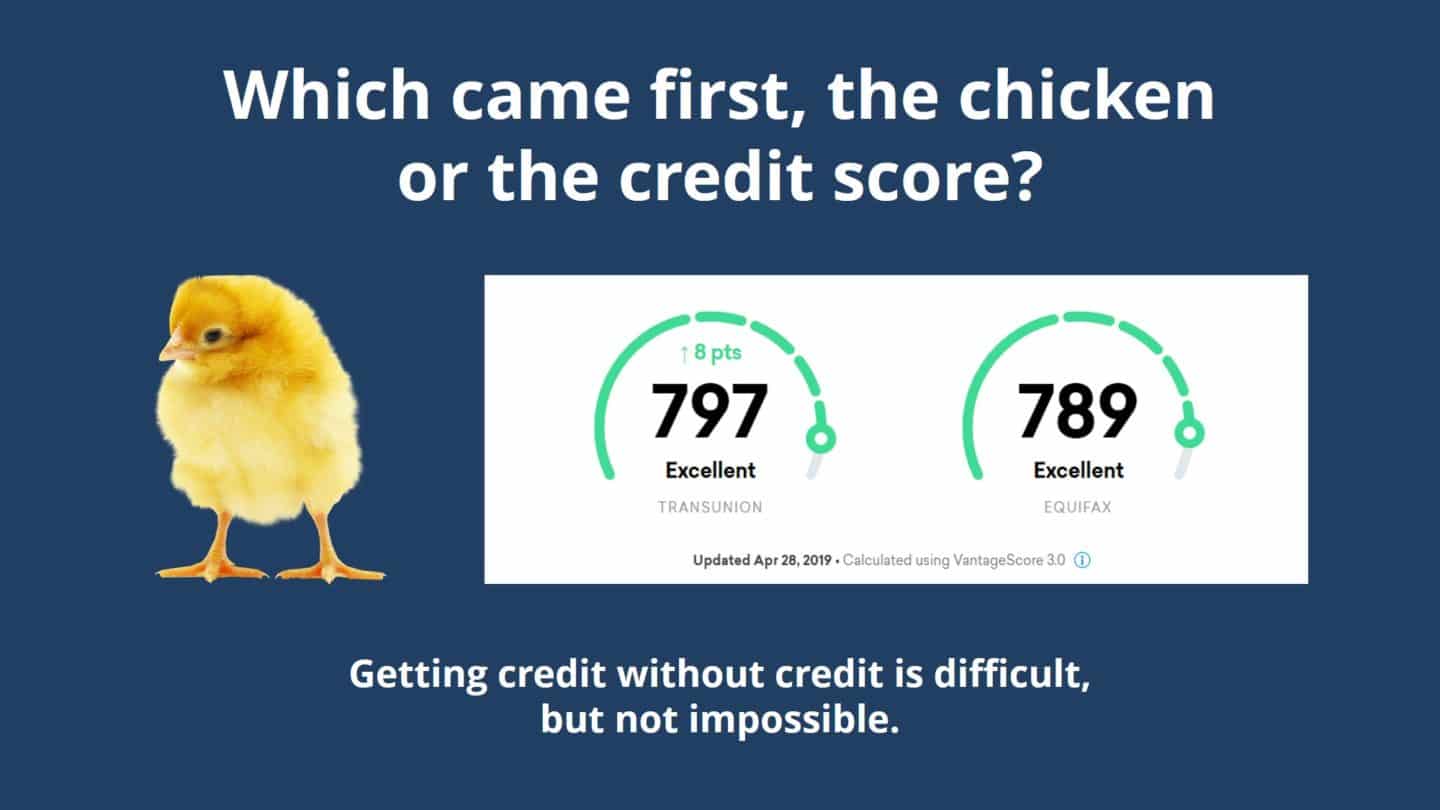The title of this article references the old “causality dilemma” commonly referred to as the “chicken and the egg”. When it comes to credit, there seems to be a similar dichotomy. How do you get credit if you have no credit?
The banks will want to evaluate your previous credit in order to determine if they will extend you credit. But, if you have no previous credit, they won’t extend you credit. If they don’t extend you credit, future lenders won’t have anything to evaluate.
You get the point.
But, not all is lost. There is a solution to crack the shell (get it?). In fact, there are many options to bust out of the no-credit catch-22. Here are a few:
Table of Contents
3. Secured cards.
Yes, getting a secured card can help you establish credit. You simply give your bank money and they convert that money into a credit card. Most banks offer credit solely based on their belief that you will repay them (i.e. your “credit” worthiness). Whereas, banks offer secured credit cards offered based on the fact that you have “secured” future advances on the card with pre-payment.
So, since there’s absolutely no risk, how does this establish credit? Well, you will make payments on the secured credit card just as you would on an unsecured credit card. The banks report your payment behavior to the credit bureaus. Credit monitoring services, like FICO, use this information to generate your credit score. This usually takes about 6 months of payment history.
The downside to a secure credit card is that, unless you have a lot of cash laying around, you typically open a small secured card, which places you in a more adolescent bracket, in terms of credit scoring. That is a concept deserving of its own article. Suffice it to say, use secured cards to break the mold. But, you’ll eventually want to get into unsecured cards for maximum credit enhancement potential.
2. Rental tradelines.
Rental tradelines are a relatively new concept on the market. In this instance, companies report your rental payment history to the credit bureaus in the form of tradelines. Assuming you make your payments on time, and the companies report these payments to the credit bureaus, rental tradelines can positively impact your credit reports and scores.
The only downside is that this the bureaus consider this tradeline as an installment account, rather than a revolving account.
According to a blog post at MyFico, revolving tradelines have more of an impact on your credit score than installment tradelines.
“Another reason revolving debt typically carries more weight than installment debt in determining your credit score is that revolving debt is usually unsecured.”
So, like secured cards, you’ll want to capitalize on rental tradelines for the purpose of eventually getting an unsecured credit card. Then, you’ll maintain that card in order to improve your credit score over time.
1. Authorized User Tradelines.
One of the most powerful ways to establish (and improve) credit is through authorized user tradelines. An authorized user tradeline is an account you’re “authorized” to use, such as a credit card. When you are an authorized user, the history of that account is reported to your credit report. Essentially, it’s like back-dating your credit report.
How is this possible?
A study conducted by the Federal Reserve Board explained:
“The [law] requires that information on spousal authorized user accounts be reported to the credit bureaus and considered when lenders evaluate credit history. Since creditors generally furnish to the credit bureaus information on all authorized user accounts, without indicating which are spouses and which are not, credit scoring modelers cannot distinguish spousal from non‐spousal authorized user accounts. This effectively requires that all authorized user accounts receive similar treatment. Consequently, becoming an authorized user on an old account with a good payment history, may improve an individual’s credit score, potentially increasing access to credit or reducing borrowing costs.“
The downside to “piggybacking” is twofold:
- You will require a friend or family to add you as an authorized user to one of their credit cards and you will need to trust that will maintain that card in good standing so long as you’re an authorized user. A credit mistake on their end (such as a missed payment or massive increase in balance) can negatively impact your credit score.
- The other option is to buy tradelines from a tradeline company. I list this as a downside only because there’s a relatively low barrier to entry in the tradeline industry and the chances of being ripped off exists. Be sure to research the company prior to working with them and connect with them and make sure they’re competent and looking out for your best interest, not just their pocketbook.
No credit, no problem?
No credit is a problem, but it’s a solvable problem. Credit takes time. There are tricks, as discussed above. Just make the right choice over time and you’ll thank yourself later.
Matias is a serial entrepreneur and CEO of many companies that help people. He owns Superior Tradelines, LLC, which is one of the oldest and most reliable tradeline companies in the country.


Nicely explained blog. you made our life easy to understand the credit score. looking forward to more such informative video .
Thanks.